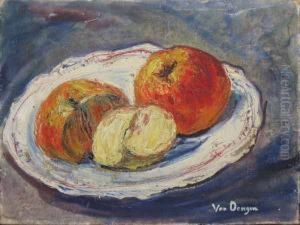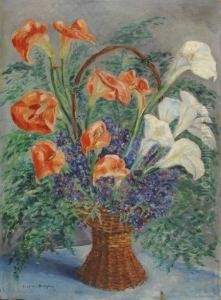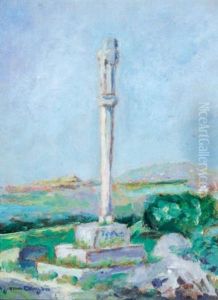Guus Van Dongen Paintings
Kees van Dongen was a Dutch-French painter who was born Cornelis Theodorus Maria van Dongen on January 26, 1877, in Delfshaven, then on the outskirts of Rotterdam. He was associated with the Fauvist movement and was known for his vibrant coloration and bold brushstrokes. His work, often focused on portraits and scenes of Parisian life, was characterized by an emphasis on sensuality and the use of bright, unmixed colors that became a hallmark of Fauvist aesthetics.
Van Dongen began his artistic journey by enrolling at the Royal Academy of Fine Arts in Rotterdam when he was only 16 years old. He moved to Paris in 1897 to further pursue his career in art, where he encountered the bohemian lifestyle and the bustling art scene of Montmartre and Montparnasse. He was influenced by the work of Henri Toulouse-Lautrec and the Impressionists. In 1905, van Dongen participated in the controversial Salon d'Automne exhibition, where the Fauves (wild beasts) – a group that included artists like Henri Matisse and André Derain – caused a scandal with their unconventional use of color and form.
Throughout his career, van Dongen continued to develop his distinctive style, characterized by a vivid palette and a focus on capturing the essence of his subjects. His portraits, often of society figures and Parisian women, were both admired and criticized for their eroticism and boldness. He also painted landscapes, still lifes, and scenes of urban life, but it was his portraits that made him famous.
During his lifetime, van Dongen traveled extensively and was influenced by North African culture, as evidenced by his use of warm, bright colors and his depictions of exotic figures. His work was widely exhibited, and he gained considerable fame and financial success. In later years, van Dongen's style became more refined and less experimental, but he remained a prominent figure in the Parisian art world until his death on May 28, 1968, in Monte Carlo, Monaco.
Kees van Dongen's contribution to modern art is significant for his role in the Fauvist movement and his innovative use of color and form. His work is held in major museums and collections around the world, and his distinctive portraits continue to captivate audiences with their intensity and allure.


